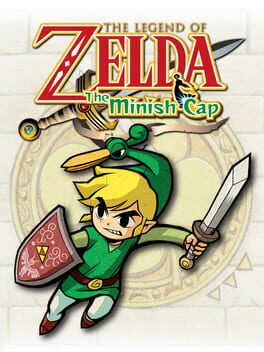Before the days of the Switch, the lines between console and handheld gaming were much more defined. Console games represented the cutting edge, they felt boundless and expansive. Handheld gaming on the other hand, was a medium defined by its restrictions. These games were small, both in terms of storage space and literal screen real size. They had to be designed to be compact, with shorter on-the-go play sessions in mind. As a kid, that didn’t really bother me. The convenience of being able to play video games in my bed trumped any interest in spectacle. But I think there’s also a real magic to handheld games, one that’s kind of been lost to time. There’s an intimacy to the experience, that tiny screen so close to your eyes, the speakers right next to your ears, the entirety of the system in your hands. It felt oddly personal, these miniature worlds you can fit in your pocket, seemingly crafted just for you.
I think about that a lot when replaying Minish Cap, a game that revels in its smallness. Its map is tiny but dense, inviting you to appreciate the nooks and crannies just as much as the larger picture. Thats where this iteration of Hyrule truly comes alive, a land that breathes in its smallest moments. The size-changing mechanic is more than just a gimmick, it’s a statement. This a game about appreciating scale, about minding the little details all around you. Behind every character, every wall, every tree stump could be a connection, a secret, an adventure, hidden in plain sight. While I’ve certainly explored bigger games, few are those I feel as close to as this one. Every pixel feels familiar, like I’ve traveled through it a million times before. If I’m lucky, I’ll get to travel through it a million times more.
I think about that a lot when replaying Minish Cap, a game that revels in its smallness. Its map is tiny but dense, inviting you to appreciate the nooks and crannies just as much as the larger picture. Thats where this iteration of Hyrule truly comes alive, a land that breathes in its smallest moments. The size-changing mechanic is more than just a gimmick, it’s a statement. This a game about appreciating scale, about minding the little details all around you. Behind every character, every wall, every tree stump could be a connection, a secret, an adventure, hidden in plain sight. While I’ve certainly explored bigger games, few are those I feel as close to as this one. Every pixel feels familiar, like I’ve traveled through it a million times before. If I’m lucky, I’ll get to travel through it a million times more.
